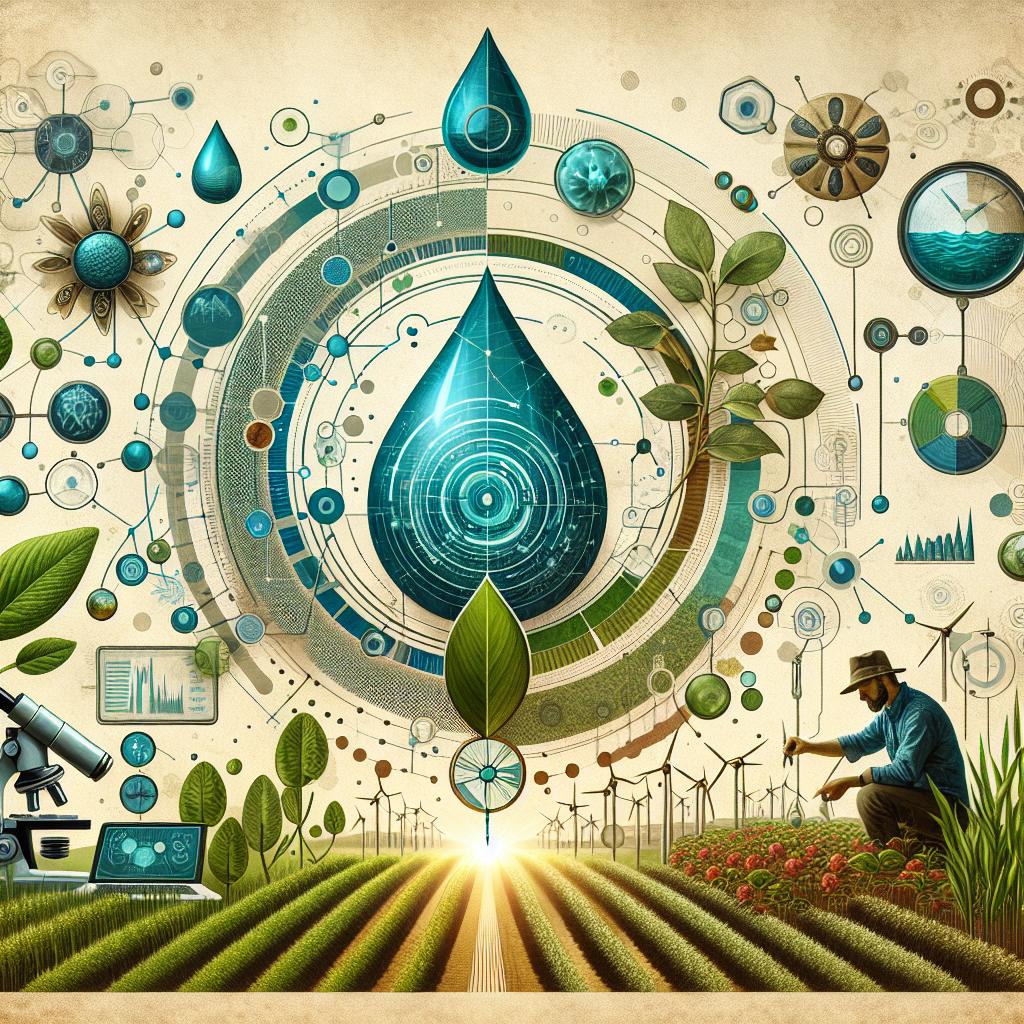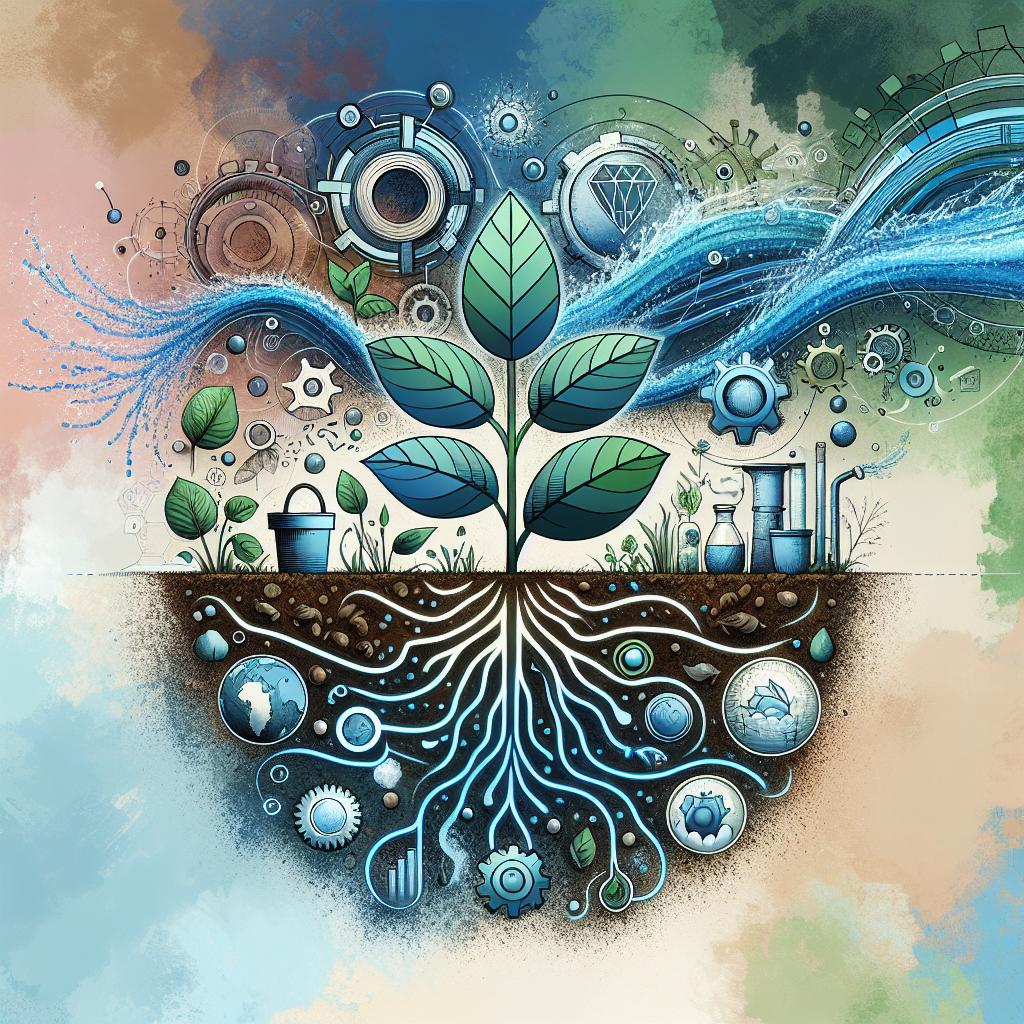This post may contain affiliate links which means I may receive a commission for purchases made through links. Learn more on my Private Policy page.
The Role of Soil Health in Determining Irrigation Needs on Your Farm: A Grounded Approach to Sustainable Agriculture
Picture this: you’re standing in the middle of your field, the sun is shining, and a gentle breeze rustles through the leaves of your crops. You’ve put in countless hours nurturing your land, and now you’re faced with a crucial question—how much water do your plants really need? Just like a well-tuned orchestra, where each instrument plays its part in creating harmony, your farm relies on the delicate balance of various elements working together. At the heart of this symphony lies soil health, a vital yet often overlooked conductor in the irrigation needs of your crops. Understanding the intricate relationship between soil vitality and water usage is more than just a practical concern—it’s a stepping stone towards sustainable farming practices. Join us as we dig deep into the essential role of soil health in determining the irrigation needs of your farm, transforming the way we approach this precious resource for generations to come. Let’s cultivate a thriving future together!
Understanding Soil Health: The Foundation of Effective Irrigation
Soil health is a multifaceted concept that encompasses the biological, physical, and chemical properties of soil. Healthy soil not only boosts crop productivity but also plays a pivotal role in determining irrigation needs. When soil is rich in organic matter and teeming with beneficial microorganisms, it improves water retention, enhances nutrient availability, and boosts plant resilience against drought and disease. Conversely, poor soil health can lead to inefficient water usage, increased irrigation costs, and lower yield sustainability. Therefore, assessing soil health can help farmers identify specific irrigation strategies tailored to their soil’s unique characteristics.
To better understand the relationship between soil health and irrigation, consider these critical factors:
- Soil Texture: The composition of sand, silt, and clay affects how quickly water drains and how much it retains.
- Organic Matter: Increased organic matter leads to improved moisture holding capacity.
- Microbial Activity: A thriving soil ecosystem helps break down nutrients and improves soil structure.
The following table highlights how various soil conditions can influence irrigation strategies:
| Soil Condition | Recommended Irrigation Strategy |
|---|---|
| Loamy Soil | Moderate Irrigation; Monitor Moisture Levels |
| Clayey Soil | Less Frequent, Deep Irrigation; Avoid Waterlogging |
| Sandy Soil | Frequent Light Watering; Quick Drainage Management |

Nurturing Nutrients: How Soil Composition Influences Water Retention
The intricate relationship between soil composition and water retention is crucial for farmers looking to optimize irrigation strategies. Clay-rich soils, for example, are excellent at holding moisture, making them a valuable asset in drier conditions. In contrast, sandy soils, although they drain quickly, can lead to water loss and necessitate more frequent irrigation. The following factors play a significant role in determining how well your soil retains water:
- Soil Texture: The mixture of sand, silt, and clay impacts water retention capacity.
- Organic Matter: Decomposed plants and animals improve soil structure and enhance moisture retention.
- Soil Structure: Aggregated soil particles create pore spaces, allowing water to be stored and retained more effectively.
Incorporating additives like compost or biochar can significantly improve the moisture-holding capacity of your soil. This not only reduces the need for frequent irrigation but also promotes healthier crops. Analyzing your soil composition can lead to tailored irrigation practices, optimizing both water usage and crop yield. Below is a simple table showcasing different soil types and their general water retention characteristics:
| Soil Type | Water Retention Ability |
|---|---|
| Clay | High |
| Silt | Moderate |
| Sand | Low |

Monitoring Moisture: Practical Techniques for Assessing Irrigation Needs
Understanding moisture levels in soil is crucial for making informed irrigation decisions that promote healthy crops while conserving water. A variety of practical techniques can be employed to monitor these moisture levels effectively. Some popular methods include:
- Soil Moisture Sensors: Utilize digital sensors that provide real-time data on soil moisture levels.
- Time Domain Reflectometry (TDR): Measure the moisture content by sending electromagnetic waves through the soil.
- Feel and Appearance Method: Regularly check the soil’s texture, color, and feel to gauge moisture content.
- Infiltration Tests: Conduct tests to see how quickly water penetrates and is absorbed by the soil.
In addition to using these techniques, farmers can also establish a simple schedule to regularly check moisture levels. This practice not only helps in understanding the irrigation requirements better but also assists in maintaining soil health. Here’s a quick reference table for establishing a moisture monitoring schedule:
| Frequency | Technique | Purpose |
|---|---|---|
| Weekly | Feel and Appearance | Quick check for general trends |
| Every 2 Weeks | Soil Moisture Sensors | Get precise moisture levels |
| Monthly | Infiltration Tests | Assess soil absorption capacity |

Sustainable Practices: Enhancing Soil Health for Long-Term Water Efficiency
Healthy soils are the backbone of sustainable farming, providing the necessary foundation for crops to thrive while efficiently utilizing water resources. By adopting practices that enhance soil health, farmers can significantly reduce irrigation needs. Some effective strategies include:
- Cover Cropping: Planting cover crops during off-seasons protects soil from erosion and improves moisture retention.
- Composting: Adding organic matter not only enriches soil nutrients but also increases its ability to hold water.
- Minimal Tillage: Reducing tillage helps maintain soil structure and prevents moisture loss.
Furthermore, implementing crop rotation and intercropping can diversify root systems and enhance soil biodiversity, which are vital for water absorption and retention. The following table summarizes the benefits of these practices:
| Practice | Benefit |
|---|---|
| Cover Cropping | Reduces erosion by protecting soil |
| Composting | Improves soil nutrient density |
| Minimal Tillage | Preserves soil structure |
| Crop Rotation | Diversifies root systems |
In Summary
As we wrap up our journey through the rich tapestry of soil health and its vital role in determining irrigation needs, it’s clear that nurturing the earth beneath our feet is not just a task—it’s a relationship. Just as we tend to our plants with care, our soils crave attention, respect, and understanding.
By embracing practices that promote soil vitality, like crop rotation, cover cropping, and mindful fertilization, we can unlock the full potential of our land. This not only ensures that our crops flourish but also leads to a more efficient use of water, ultimately benefiting both our farms and the environment.
So, as you stroll through your fields, soil report in hand and knowledge in your heart, remember that you are not just farming—you’re cultivating a sustainable future. Let’s continue to dig deep into the wonders of soil health, supporting our crops, conserving water, and weaving a legacy of stewardship for generations to come. Happy farming, and may your fields be lush and your harvests bountiful!
This post may contain affiliate links which means I may receive a commission for purchases made through links. Learn more on my Private Policy page.
